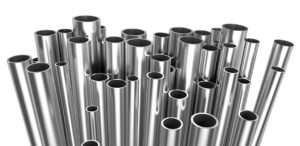304SS 316SS
With its chromium-nickel content and low carbon, is the most versatile and commonly used of the stainless steels. Type 304 proves to be resistant to oxidation and corrosion. Type 304 stainless provides ease of fabrication and cleaning, prevention of product contamination and offers a variety of finishes. The 304 stainless steel is used in enclosures, storage tanks, pressure vessels and tubing or piping. Stainless steel is chromium-nickel stainless and heat-resisting steel with superior corrosion resistance as measured up to other chromium-nickel steels when exposed to many types of chemical corroding elements. Buyers may find that the upfront cost is a little higher but could save a lot on the back end which is something to keep in mind when purchasing.
Given that Type 316 stainless steel alloy contains molybdenum it has a considerable more resistance to chemical attack than 304. Type 316 is durable, easy-to-fabricate, clean, weld and finish. It is considerably more resistant to solutions of sulfuric acid, chlorides, bromides, iodides and fatty acids at high temperature. Stainless steels containing molybdenum are required in the manufacture of certain pharmaceuticals in order to avoid excessive metallic contamination.
304SS vs 316SS or 304 stainless steel and 316 stainless steel are popular grades of stainless steel widely used in various industries. Although they are quite similar in many aspects, there are a few notable differences between them. Here are some key differences:
Chemical Composition
The primary difference between 304 and 316 stainless steel is their chemical composition. 304 stainless steel contains a higher amount of chromium (18-20%) and nickel (8-10.5%), while 316 stainless steel has a slightly higher percentage of chromium (16-18%) and a significant increase in nickel content (10-14%).
Corrosion Resistance with 304SS vs 316SS
Both 304 and 316 stainless steel exhibit good corrosion resistance in most environments. However, due to its higher chromium and nickel content, 316 stainless steel offers superior resistance to corrosion, especially in highly corrosive environments like marine or coastal areas. It is more resistant to chloride-induced pitting and crevice corrosion.
Temperature Resistance with 304SS vs 316SS
While both grades perform well at lower temperatures, 316 stainless steel exhibits better high-temperature resistance compared to 304 stainless steel. It can withstand elevated temperatures without losing its corrosion resistance properties, making it suitable for extreme heat applications.
Strength and Durability
In terms of overall strength, 316 stainless steel is slightly stronger than 304 stainless steel. This higher strength is due to the addition of molybdenum in 316 stainless steel, which enhances its tensile strength, yield strength, and overall durability.
Compatibility with Food and Medical Applications 304SS vs 316SS
Both 304 and 316 stainless steel are considered safe for use in food and medical applications. However, 316 stainless steel is more commonly used in such industries (Static Mixers) due to its enhanced corrosion resistance and ability to withstand exposure to harsh chemicals.
Cost
In general, 316 stainless steel is more expensive than 304 stainless steel due to its increased nickel and molybdenum content. The higher cost reflects the superior corrosion resistance and overall performance of 316 stainless steel.
It’s worth noting that these differences are broad generalizations, and the suitability of each grade depends on the specific application and environment. It is always advisable to consult with a materials engineer or an expert in the field to determine the best stainless steel grade for your specific needs.
For any further content information, pls visit our Blog Category.

